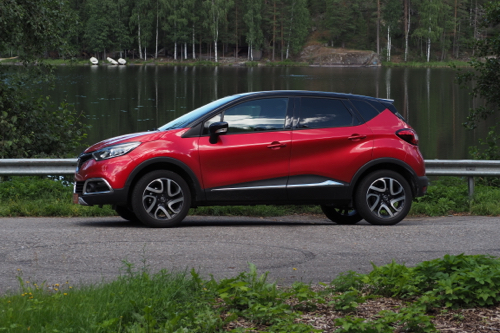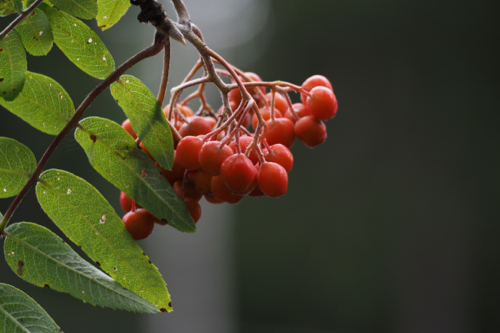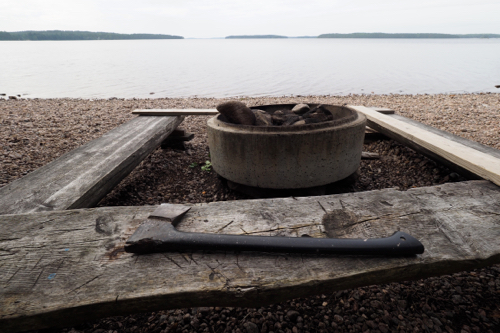August 13, 2017. Helsinki to Savonlinna, Finland.
Savonlinna is 350 kilometres north east of Helsinki and is surrounded by lakes. Not surprisingly it’s in an area known as the Finish Lakeland.
Finland is a country of forests, 70% of the country is covered by them, islands and lakes. We had certainly seen the trees on our trip to Lapland and some of the islands in Helsinki.
Now it was the lakes.
There are over 168,000 lakes that are larger than 500 square metres and 179,000 islands.
Most of the Finish landscape is a result of the last Ice Age. The glaciers were thicker and lasted longer in this region, compared to the rest of Europe, leaving the landscape flat with few mountains.
As we left Helsinki we detoured to visit the Kallio Lutheran Church. We had seen it while touring around the city and were interested to get a closer look.
It was completed in 1912 and designed by Lars Sonck in the National Romanticism style with Art Nouveau influences. The grey granite structure is 65 metres high, and dominates the flat Helsinki landscape.
The Estonian coastline can be seen from the tower.
While we were in our long pants, jackets and jumpers, the local tourists were in T-shirts and shorts.
I think they are living in a false sense of summer.
August 14, 2017. Savonlinna, Finland.
We were running out of clean clothes and the hotel didn’t have a laundry service.
Therefore our first job was to find a laundrette.
This took us to parts of Savonlinna that tourists wouldn’t normally go. There we found a commercial laundry and they had one small machine, so we left our clothes to be washed and went off sight seeing.
Olavinlinna Castle is the primary tourist drawcard in the Savonlinna area, apart form all the lakes.
And it was also only 200 metres from our hotel.
Olavinlinna Castle was started in 1475 by Eric Axelsson Tory (1415-1481) and renovated by the Finnish State between 1872 and 1877.
The castle has been a constant battleground, as Finland has been under the control of both the Swedes and the Russians, for centuries.
In 1912, Aino Ackté, a world renowned Finnish opera singer started the Savonlinna Opera Festival in Olavinlinna Castle. She gave more performances in 1913, 1914, 1916 and 1930, after Finland’s independence.
The festival was restarted in 1967 and has just celebrated its fiftieth year. It is now held annually, within the castle walls and had just finished. A temporary stage and seating allows the performances to continue, despite the weather.
About 60,000 people come to Savonlinna for the festival. That’s a lot more people than we ever saw in the town.
In a weird twist of culture, the festival season ends in August with a boxing match.
When the town is surrounded by lakes you don’t use a Hop-on Hop-off bus, you take a boat.
We took an hour long cruise around the islands in the MS Leva.
This gave us yet another opportunity to view the Olavinlinna Castle, this time from the water.
One of the strangest sights we encountered was on our way into Savonlinna. There was a rather large bridge under construction and instead of metal scaffolding supporting the works, it was all timber.
I guess when 70% of your country is covered in trees, you need to use them.
August 15, 2017. Savonlinna, Finland.
After breakfast we set off to visit the wooden Lutheran church in Kerimäki, which is about 23 kilometres from Savonlinna.
Kerimäki is the world’s largest wooden church.
Designed by Anders Fredrik Granstedt and built between 1844 and 1847, it can hold up to 5,000 people. It measures 45 meters in length, 42 meters wide and 37 metres high.
The reason that it’s so big is that Frederik Neovius, who held office at the time, believed that the church should be able to hold half the townsfolk of Kerimäki at any one time.
When winter comes in Finland you don’t want the faithful standing out in the cold.
The rest of the day we negotiated the narrow stretches of land, between the lakes, and just drove around.
We had no particular plan other than look for some good photo opportunities.
We found these at Lake Puruvesi and Lake Enonvesi.
The constant threat of rain has produced some spectacular clouds as they constantly moved across the sky.
Fortunately the rain had held off for the last couple of days, which was good considering that most of our activities were outdoors.
In the evening we walked back into harbour area for dinner. We discovered that the best place was the Bistro Ŵaahto.
They only had two draught beers but the food was excellent.
On the way back to the hotel we walked past Olavinlinna Castle, yet again, and took more photos.
I think I have take more photos of this Medieval castle than anything else on our travels.
August 16, 2017. Savonlinna to Imatra, Finland.
The Imatrankoski or Imatra Rapids were formed around 5,700 years ago, during the stone Age.
Water from the higher Saimaa lake penetrated the Salpausselkä Ridge, causing the river to flow into the lower Lake Ladoga, gouging out the ravine where the rapids run.
The rapids were so spectacular that they put Finland on the tourist map.
Since the 1700s’ people have come from around the world to visit the Imatra Rapids.
In 1903 a stone hotel, the Valtionhotelli, was built overlooking the rapids. This was after several smaller wooden ones burnt down.
Now the tourists and the dignitaries had somewhere grand to stay.
The Russian Empress, Catherine the Great, visited in 1772 and Dom Pedro II, Emperor of Brazil, in 1876.
Fourteen trains per day brought people to Imatra from St Petersburg to see the wonder of the rapids.
In the 1920s’ tourism declined, as a result of the depression. So, in 1929, they dammed the rapids and built a hydro electricity plant.
Now there’s nothing left except a dam wall, dry river bed, power lines and ‘graffiti’ carved into the rocks by famous visitors.
As a compromise the dam gates are opened daily in the summer months and also on Christmas and New Year’s Day. Presently they are closed completely due to renovation work on the Imatra Hydroelectricity plant.
August 17, 2017. Imatra, Finland.
Even though this was the high season Imatra was very quiet.
The rain held off again so we decided to go on another forrest walk. This time to Lammassaari Park on Mulikionselka Lake.
We only walked 4.5 kilometres but it took us two hours.
Again the track was clearly marked, this time with white dots on the trees, not yellow.
There weren’t the information boards along the way but small numbered posts with QR Codes.
Much more high-tech, but useless unless you’re on-line.
The walk was great. It wandered around a small peninsula, meandering along a mixture of coastal and forest tracks.
There were many campfire spots with firewood and even axes and a bow saw, if you felt like a bit of exercise.
One of the fireplaces was in a small cabin. Probably used in winter or when it rained, which is very often.
We had a coffee at a lakeside restaurant and Thea got chatting to the owner.
Apparently he is only open for four months of the year. The rest of the time he travels.
To somewhere warmer, would be my guess.
August 18, 2017. Imatra to Porvoo, Finland.
We woke again to the sound of Eurovision style music coming from the town square.
Our hotel was the Centre Hotel Imatra and it certainly was right in the heart of the town.
The drive from Imatra to Porvoo is about 230 kilometres, that’s if you take the longer route, as we did.
Just over the road from our hotel in Porvoo was the Porvoo Cathedral and Bell Tower. The first church to be built on the site was wooden and like most wooden structures of that time it burnt down. It was replaced by a stone sided church around 1410-1420.
Since then the church has been destroyed by fire again many times. In 1508, by the Danes, 1571, 1590, 1708 by the Russians and in 2006 by Kalle Holm, a Black Metal musician.
Porvoo has the oldest Town Hall in Finland, being completed in 1764. It sits proudly in the town square and now houses the Porvoo Museum.
Porvoo is one of the six Medieval towns of Finland with its first historical mention being in the 14th century. The original city was believed to have been founded in 1346.
It’s only 50 kilometres east of Helsinki, so day-trippers come there by the busload.
The Old Town is famous for its Medieval wooden houses, especially the Shore Houses that run along the Porvoo River.
Porvoo is currently under consideration for a UNESCO World Heritage listing and I can understand why.
We have had two great ‘beef’ meals on our travels. The first was in Malbun, Lichtenstein, in 2012 with Hayden, the other one was in Porvoo, Finland.
Ravintola Meat District is in Old Porvoo, about five minutes walk from our hotel and just near the river.
Dry aged beef hangs in a large refrigerator in one part of the restaurant – proof that they knew something about their meat.
The Meat District pride themselves on sustainability, with a focus on ecological meats and organic ingredients.
August 19, 2017. Porvoo, Finland to Tallinn, Estonia.
Today we had to get the ferry from Helsinki back to Tallinn in Estonia.
So it was more sitting around.
It started to rain as we arrived back in Helsinki and the sky was dark. Much as it had been when we arrived 13 days ago, and has been for most of our time in Finland.














